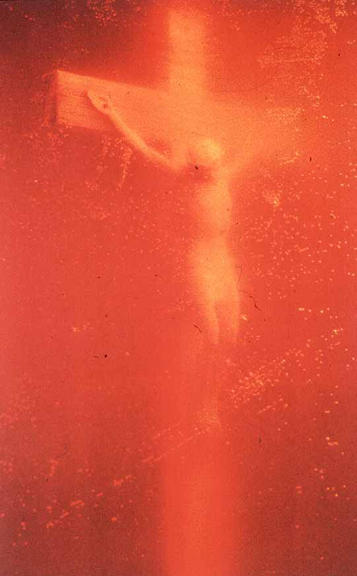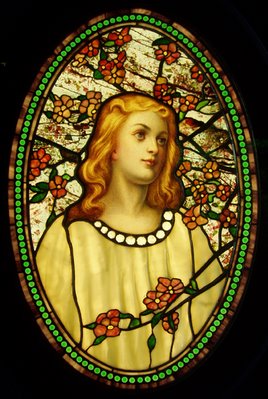
 Can anyone really look at a photo of a cup of urine with a crucifix in it and say it’s beautiful? Isn’t that what Art is supposed to evoke in us? A sense of beauty? I don’t know if it’s beautiful, but that all depends on whether Serrano meant for it to portray beauty in the first place.
Can anyone really look at a photo of a cup of urine with a crucifix in it and say it’s beautiful? Isn’t that what Art is supposed to evoke in us? A sense of beauty? I don’t know if it’s beautiful, but that all depends on whether Serrano meant for it to portray beauty in the first place.
When he gave it meaning with some intention, he gave it a job to do. That job might not necessarily have been to entice you to say, “That is the most beautiful photo of a pee soaked cross I’ve ever laid eyes on. And look at the lovely amber color of the urine! Where can I buy a print?” The function of Art isn’t always about what makes a pretty picture.
Since all Art is about intent, an artist might have several different functions in mind for her work to do. It can illicit some kind of emotional response such as happiness, sadness, or disgust in the case of the previously mentioned pee on Jesus. It might be trying to make a point or be representing an idea like that volcano painting or the red ping pong table. It may support someone else’s idea like a magazine or book illustration. Its purpose could be to entertain either an audience or the artist themselves. It can intend to be an inspiration for other art or an example of a genre. It can even be a means to gain approval or love, like the crayon drawings we plaster all over the fridge that we get from kids. And, of course, maybe the artist just made something to look pretty. The possibilities are endless!
How do we know the job the Art is supposed to be doing? Well, like the meaning of the painting it can come from the artist themselves. But also like the meaning, we may perceive it as being within the Art itself. We can look at a Tiffany stained glass window and probably get some kind of clue as to the job it’s to do. Maybe we get a sense of beauty from it. That’s its job, or at least one of the jobs the window is supposed to perform, as far as we can tell.
Girl with Cherry Blossoms , Louis Comfort Tiffany, c. 1890
We might not even know the job that the Art is supposed to be doing. This might be an accident when the artist hasn’t made his intentions clear and we miss something, or the work is misinterpreted. These things may alter the value we place upon the work. But sometimes the job might be to target a specific audience. You might not like Hannah Montana, but that might be because her music isn’t meant for you.

Her artistic endeavors function to appeal to thirteen year old girls and sell CDs to them. And if you’re a parent of one of them, you’ll likely be ultimately exposed to Ms. Montana’s music anyway when you play chaperone to half a dozen of your daughter’s screaming friends at her concert.
But what about the photo of the pee-cross? Surely its function is not to elicit gasps of adoration. Perhaps it’s meant to irritate or even outrage the viewer. And, like Hannah Montana, it’s probably directed at a particular audience. Hindus may be likely to find something appalling if it concerns urine being used as part of an art object, but won’t be personally offended like Christians are likely to be. Or the Catholic Church. But an understanding of something so controversial can come from the unlikeliest of places. Sister Wendy Beckett, the Art nun, voiced her approval of Piss Christ. She regarded the work as a statement on “what we have done to Christ.”
 Just because it has a job to do, or someone approves of it, does that necessarily mean it has value? You may think its crap, but can it be appreciated for what it’s trying to do? Does it have any worth? Is it, dare I ask, any good?
Just because it has a job to do, or someone approves of it, does that necessarily mean it has value? You may think its crap, but can it be appreciated for what it’s trying to do? Does it have any worth? Is it, dare I ask, any good?
Next time: Why Is This Crap Hanging In A Museum?


No comments:
Post a Comment